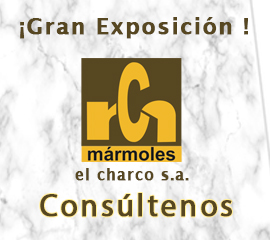
A comprehensive plan for the Barranco of Las Peñitas and Ajuy
The Barranco (riverbed) of La Peñitas and its continuity with the Barranco of Ajuy and the vegetation that grows on their sides, their palm trees and associated gavias (traditional fields with water retention) is an essential area to understand the geological, cultural and biodiversity future of the island of Fuerteventura. ¡Agua, agua, agua! Tal es la magua; / Que oprime el pecho de esta gente pobre; / Agua, Señor aunque sea salobre; / ¿para qué tierra, si les falta el agua? Water, water, water! So much sadness;/ That oppresses the chest of poor people;/Water, Sir even if it is salty;/what do you want land for, if you don’t have water? This is a verse from Miguel de Unamuno, found in the introduction of the book called “la cultura del agua (water culture) published by Fuerteventura’s Cabildo, in 2015; because it has always been and still is one of the defining elements of the arid island of Fuerteventura. History shows us its long path. We have gone from the trio: rain/drought/emigration, to that of naturalwater/industrial desalinated water/immigration (including the corollary energy expense, atmospheric pollution and consumption of the territory), then to another trio of water/renewable energy/climate change. In fact, in 2023, we can deal with the water problem from various perspectives. Water as a development limiting factor, especially concerning food production and the development of the tertiary sector. But also as an opportunity to innovate in water-saving systems, depuration, ecological agriculture and revegetation. Water, or the lack of water as an inherent factor for the survival of populations, international conflicts and emigrations, or as a factor of knowledge transfer, as a tool of social transformation and friendship between populations. The lack of water as a consequence of climate changes and extreme abundance caused by rain phenomena and floods or adaptation and mitigation in the face of those issues. All in all, water keeps on conditioning us and we must deal with this determinant as a challenge and also as a motivation to keep on developing new strategies that combine nature, knowledge and financial development, that will transform the Canaries into a laboratory for water culture, which is renewable, decarbonated and that will turn our fields and villages green again. This ambitious comprehensive Plan of regeneration of the Barranco aims at uniting technical knowledge, popular know-how, future climate forecasts, agro-ecology and socio-economics. All this aims to search for the best knowledge available in the regeneration and restoration of barrancos in an area of great environmental and cultural significance for the island of Fuerteventura, such as this barranco. By applying the best techniques to recondition the ecosystems of the barranco’s riverbed and the reduction of the flooding risk in the urban areas of Rio Palmas and Ajuy, using natural solutions. By designing significant actions to use the water of the barranco in a sustainable and efficient manner, promoting infiltration and the replenishment of the island’s aquifer. Another important aspect is the prevention of the loss of fertile soil that gets eroded through the barranco during torrential rainfalls, and desertification, by replanting vegetation. Finally, present action proposals that have a positive socio-economic impact and reduce the depopulation and the generational gap, by generating opportunities with agro-ecology and emphasising cultural landscapes. There is also the improvement of agriculture by reviewing and highlighting the importance of traditional agricultural structures like gavias and nateros (traditional fields with water retention). The plan will also have an impact on the environment with the improvement of the preservation of the rich biodiversity of the barranco and more particularly the endemic Phoenix canariensis palm trees of Rio Palmas, Madre del Agua and Ajuy,which suffer from hydric stress. The team of researchers and engineers will consist of the prestigious group of hydraulic engineers from Ecologistas en Acción, led by Santiago Martín Barajas who has been asked to elaborate the Plan by the Council for Ecological Transition and Fight against Climate Change. He is joined by Eugenio Reyes from BemMajec-EA, a specialist in the flora of the Canaries and population participation, and Tony Gallardo from AVANFUER-EA, an expert on natural space planning and Biosphere Reserve, who has started his work with an onsite visit from the Convent of San Buenaventura until the estuary on the beach of Ajuy, creating an analysis of important sites such as the area of La Alberca and the dam of Las Peñitas.



